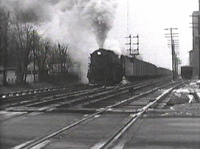
Herron Rail Video archive In his The Unwanted Berkshires in the Spring 2004 issue of Classic Trains magazine, Jack Polaritz looks at the genesis and careers of Pittsburgh & Lake Erie 9401-9407, the last 2-8-4 design in America. After P&LE dieselized, the engines were stored, then reactivated in 1955 when another New York Central subsidiary, […]
Read More…

Herron Rail Video archive In his The Unwanted Berkshires in the Spring 2004 issue of Classic Trains magazine, Jack Polaritz looks at the genesis and careers of Pittsburgh & Lake Erie 9401-9407, the last 2-8-4 design in America. After P&LE dieselized, the engines were stored, then reactivated in 1955 when another New York Central subsidiary, […]
Read More…
Pennsylvania Railroad’s coast-to-coast air-rail service, run jointly with the Santa Fe and Trancontinental Air Transport, was championed by PRR president Gen. William Wallace Atterbury. (A promotional video clip of that service is available on our site. See the link at the bottom of this story.) The Winter 2003 issue of Classic Trains magazine takes an […]
Read More…
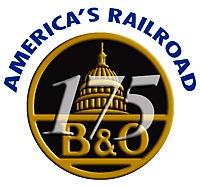
Baltimore & Ohio timeline: 1827 Charter approved 1828 Official start of construction on July 4 1830 Scheduled service begins, Baltimore-Ellicotts Mills, May 24 1831 Service begins to Frederick, Md. 1832 Service begins to Point of Rocks, Md. 1835 Service begins on Relay-Washington branch, construction having begun in 1833 1837 Potomac River bridged at Harper’s Ferry, […]
Read More…
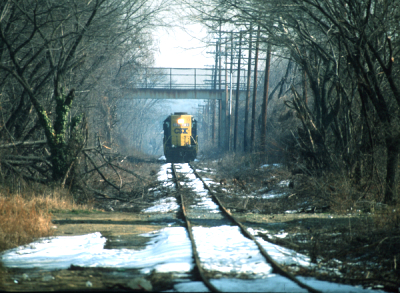
Returning to Benning Yard, CSX local B701 makes its way slowly north on the historic Shepherd Industrial Track, near Anacostia Park in Washington, D.C. Mike Schaller The Baltimore & Ohio was the first railroad to serve Washington, D.C., completing a branch from its main line at Relay, Md., in August 1835. To reach markets south […]
Read More…

Here’s a variation on a familiar World War II theme, the diverse geographical backgrounds of men serving together in the armed forces. It comes to us in the form of some faded sheet music dedicated to the Military Railway Service. The rousing anthem “Railroaders Always” is of interest in its own right, but the cover […]
Read More…
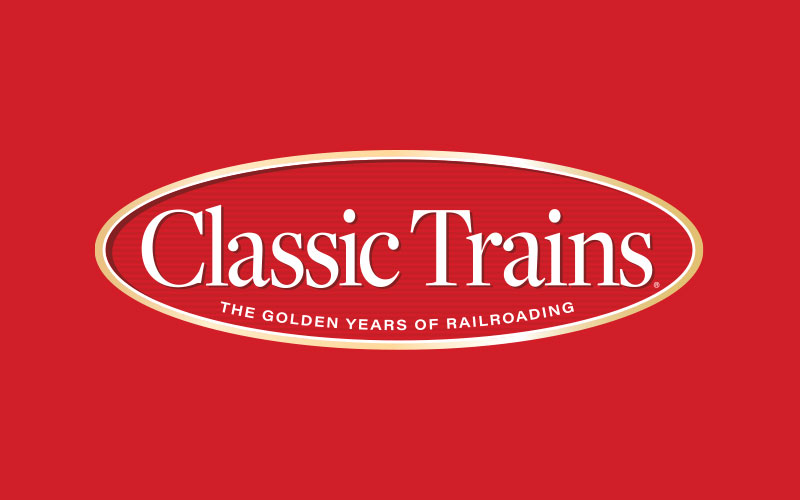
I hired out in 1944 with the Santa Fe as an agent/operator apprentice and in August was assigned to the agent/operator pool. In about a year I was 26th up from the bottom of the list, so I was able to successfully bid on some openings. One night in about 1946, I was working relief […]
Read More…

During my career as an engineman on the Southern Pacific, I ran and fired locomotives carrying from 185 to 300 psi of superheated steam. The engine in this story was a 3700-class 2-10-2 which carried 200 psi of steam at 510 degrees F. Every road locomotive had two water glasses, one on the engineer’s side […]
Read More…

The year was 1966; I was 19 years old and starting my second summer working on the Great Lakes. This year I was called to be a deckhand on the Leon Falk Jr. of the Hanna fleet. At 730 feet overall, she was one of the largest boats on the Great Lakes, and could haul […]
Read More…
Before a 1960 line-relocation project, the two main tracks of the Santa Fe Railway’s transcontinental main line split at Supai, a few miles west of Williams, Ariz. The westbound track followed a more circuitous route, enabling trains to more easily climb the steep Supai hill. Twelve miles west of Williams the tracks met again, at […]
Read More…
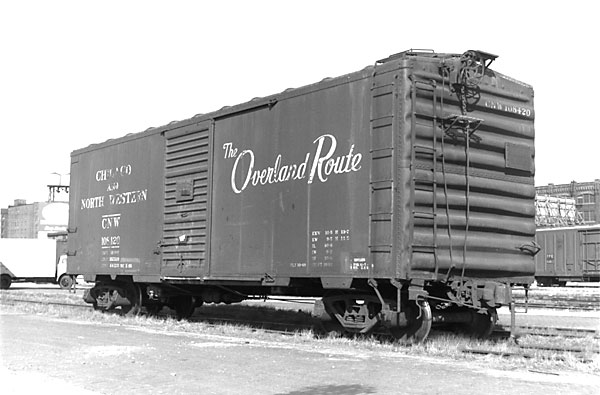
In the days before airlines and interstates began siphoning off rail freight and passenger business – and big railroads merged to form today’s even bigger mega-systems – virtually every large city and town was served by multiple railroads. Shippers had their choice of carriers to move goods between Points A and B. Passengers, too, had […]
Read More…
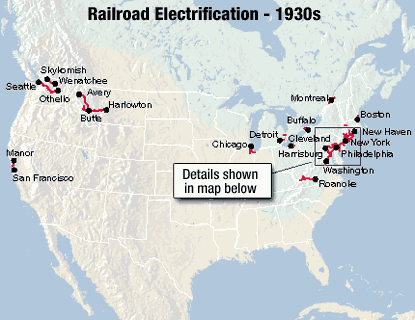
At the end of the 1930s, the United States stood as the world leader in railroad electrification. With 2400 route-miles and more than 6300 track-miles under electric power – far more than any other country – U.S. electrification represented more than 20 percent of the world total. Electricity was harnessed for a variety of railroad […]
Read More…







